OneRoof's latest housing market report identified 399 New Zealand suburbs that enjoyed double-digit growth in the median property value in the last 12 months. Once again the suburbs that enjoyed the most growth were in smaller regional towns and centres. But what's caused property values to boom in those suburbs and what effect are rising house prices having on those buying and selling there? Here's our guide to New Zealand's hottest property markets:
1. Normanby, South Taranaki - up 41 percent
This booming little community on the west coast of the North Island is fast becoming a suburb of nearby Hawera, such is the growth over the past year.
The south Taranaki township, with snow-capped Mt Taranaki as a backdrop, has topped the list of biggest risers with 41.7 per cent median price growth in the last 12 months.
Start your property search
READ MORE: Is your suburb hot or not - explore our interactive
“Normanby was a dormant township for many years, now it’s become an active place to live,” says Selwyn Metcalfe, managing director of Metcalfe Real Estate.
He puts the rising popularity of Normanby, population under 900 as of the 2013 Census, down to growth in lifestyle blocks, commercial development, and attractive low house prices.
“Because of the lower cost of housing there has been a tendency of people to move there, both investors and first home buyers.”
While the median value sat at $255,000 for last year, the top sale, of $610,000, was probably a lifestyle property, he says.
Things are only looking up in Normanby. Metcalfe has just sold a brick house, that had been on the market for a couple of years, for $452,000, and he recently sold a closed-down pub, known as the “back hotel”, to a woman who plans to turn it into a gallery.
Demand for property in South Taranaki in general is incredible, says Metcalfe.
“In my 40 years of real estate I’ve never seen it like this before.”
2. Taihape and surrounds, Rangitikei - 37.9 percent
Agents in Taihape, in the Rangitikei, put the town’s 37.9 per cent price growth down to out-of-towners coming in for the cheaper housing.
Median values for the past year sat at around $200,000 with the biggest sale last year fetching $450,000.
Property Brokers agents John Hewitt and Deborah Moon say the rural town, which has State Highway One running through it, is only going to get busier.
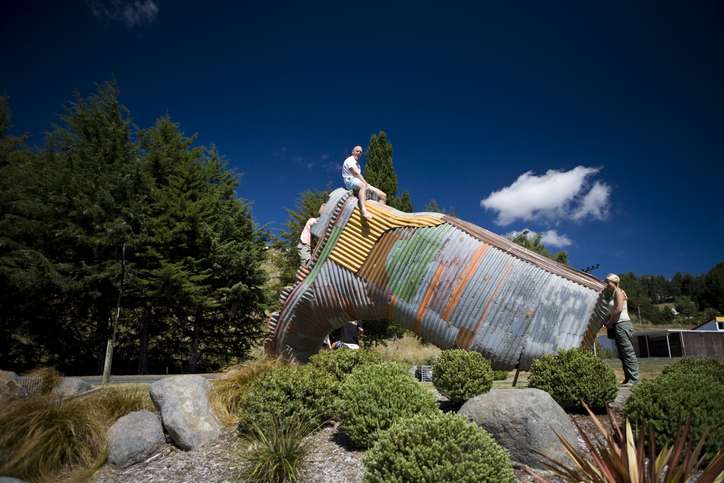
Taihape is known as the gumboot capital of the world and the Big Gumboot statue is a popular tourist attraction. Photo / Getty Images
Says Moon: “I can see it’s just going to keep going because we’re still way behind in prices compared to the rest of New Zealand.”
The $200,000-priced properties might be rundown and need a bit of work but there’s an urgency to the buying from some people who realise they have to buy at the lower end of the price scale to get a home because banks won’t lend to them for higher-priced homes, she says.
There are also buyers wanting to cash up and live mortgage-free who are coming into town, and even Kiwi-based investors in Australia are buying into the area.
3. Wairoa, Wairoa - up 36 percent
Like bees to honey, out- of-towners are also attracted to the low prices to be found at Wairoa over on the east coast.
With a median value of $170,000, the coastal Hawkes Bay town at the mouth of the Wairoa River saw a 36 per cent surge in value over the past year.
The top sale from last year, of $440,000, was a five acre lifestyle block at Ruataniwha - but if the property went on the market now it would likely sell nearer to $500,000, says Vern Withey from Property Brokers.
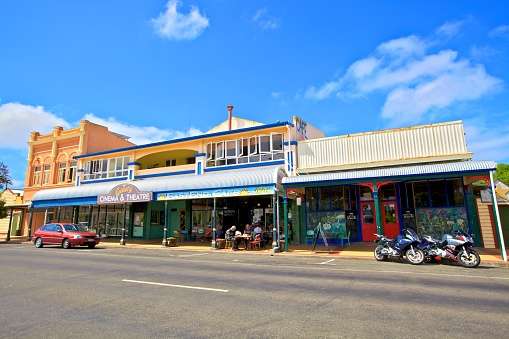
Like Napier, Wairoa is kown for its art deco architecture. Photo / Getty Images
People are flocking to the town, between Napier and Gisborne, to live and Withey thinks a key factor is because “everywhere else” is so expensive that makes Wairoa very affordable.
About a third of sales are to investors, a third are to local first home buyers and a third are to people from other parts of the country, from Porirua to Whitianga.
“It’s quite a nice place to live once you get here. It’s pretty cruisy and you can buy a really nice home for under $300,000 - that’s what it is.
“You get everything here. It’s just a small town. We’ve got three banks, chemists, a bowling club, a little hospital. It’s all here. A hidden gem really.”
4. Mataura, Gore - up 34.8 percent
The Southland town of Mataura, ten minutes from Gore, is on the up. With average prices here a mere $155,000, this is great buying if have been priced out of Gore where it now takes $290,000 to buy a medium house, says Harcourt’s Grant North.
OneRoof figures showed a 34.8 per cent increase in the median value for Mataura over the last year, with the top sale reaching $250,000.
The town has a meat works and had the paper mill for many years but the new Mataura dairy plant has also brought people from further afield into the area and some have gone on to buy houses, North says.
“They could see there was a lot of potential in the town. They couldn’t buy a house for the money they had and they were able to buy a good home here for a lot less and still have a good living.”
There’s a primary school, a Four Square, two meatworks within 10 km of each other, plus the Edendale and Matuara Valley diary factories.
“People are starting to realise Mataura is quite a nice place. It’s quite a nice little town.”
5. Reefton, Buller - up 34.5 percent
Reefton, population about 1200, is a pretty little mining town nearly 100 kilometres inland from Greymouth and Wesport on the west coast of the South Island.
Linda Jones, from Property Brokers, wonders if the fact the town is so far from the coast and away from erosion is attracting people to live there because property is selling like hot cakes.
The median property value is sitting at around $195,000, according to OneRoof figures, which is a 34.5 per cent rise over the past 12 months.
The top price of $358,000 over the past year went for a four bedroom newish home with en suite and walk in wardrobe at Wicken Place, a new development.
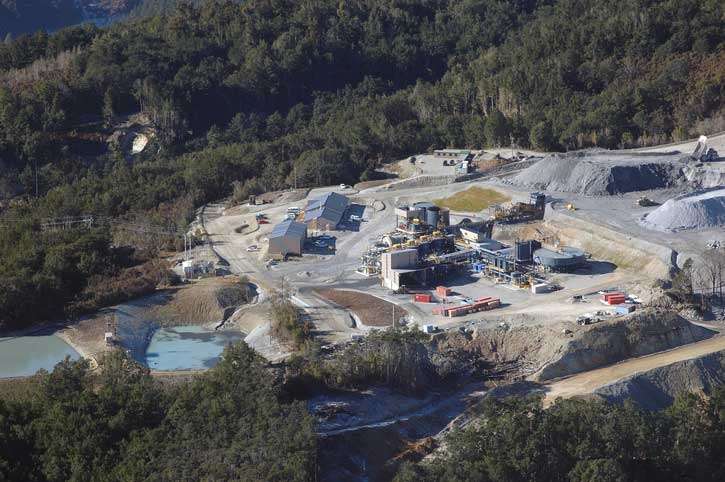
Reefton is still very much a mining town, with gold mines operating on its outskirts. Photo / Getty Images
There are some sections left at Wicken Place but everything else has sold so if you want new you are going to have to build, says Jones.
Most people coming to town - many of them retirees with motorhomes - are looking in the $200,000 range but there aren’t many homes left for that price but you can buy a good, solid, three bedroom house with a garage and decent heating for between $230,000 and $250,000.
Jones is also selling to first home buyers and to people moving to the area for work, saying there are businesses in town and also some coal and gold mines still operating in the area.
“There’s not really a shortage of jobs here if someone wants to work.”
The main street is lovely and like stepping back in time, she says
“You’ve got your verandahs and most of the businesses have been brought up to speed so it looks really tidy. Most people are proud of Reefton.”
6. Waverley, South Taranaki - up 30 percent
At least half the home buyers in the rural south Taranaki town of Waverley are people being squeezed out of the booming Whanganui, reckons Kelly Baldwin of First National.
OneRoof figures show last year’s median value was $170,000 in Waverley - about 30 minutes from Whanganui - up 30.8 per cent in 12 months.
In comparison to other places, Waverley is still cheap and is proving a good option for people who are heading towards retirement, says Baldwin.
“They’re looking at cashing up in a really hot market in Whanganui and buying in the cheaper market in Waverley, usually even with a motorhome in tow. They enjoy travelling around and coming back and having a base.”
Waverley is only six kilometres from the beach and handy to both Whanganui and Hawera - but one of the big reasons people are coming is because of the crazy Whanganui housing market, Baldwin says.
“Whanganui’s nuts. There’s a lot of buyers missing out down there and I think that’s pushed the Waverley prices up, just by getting squeezed out of the Whanganui market.”
Waverley, which Baldwin says has probably only 500 households, has a busy main road, a Four Square, a vet’s clinic, pub, garage, play centre and primary/intermediate school.
7. Te Awa, Napier - up 29.6 percent
This Napier suburb is desirable because of its mix of old and new homes and close proximity to town, sea and transport links.
The median value for the past year climbed to $635,000, a 29.6 per cent increase, and the biggest sale was for $785,000.
Stuart Christensen of Tremains says Te Awa divides into older style homes and brand new housing, particularly at Te Awa Estate, a big new subdivision adjoining the golf course.
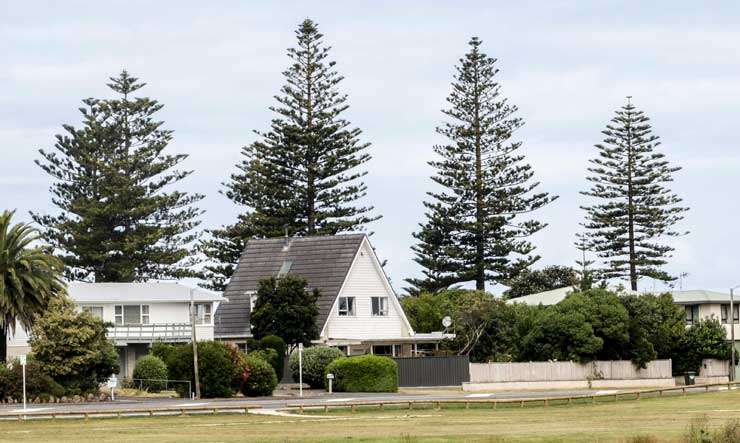
Te Awa's median property value climbed 29.6 percent year on year.
“You’re close to the CBD so you’ve not far to go. You’re close to the cycleways and also close to the beach, but you’re also only a couple of minutes and then you’re on the expressway if you want to go out through to Hastings and Havelock.”
First home buyers can’t really afford Te Awa so it’s second and third home buyers moving into the suburb, Christensen says, and there are some older couples who have sold up further out and want something closer to town.
8. Ohakune, Ruapehu - up 29.1 percent
If the central north island ski town of Ohakune had a lake it would be “a Wanaka or Queenstown”, says Kath Campbell from NZR Real Estate.
Campbell is not surprised by a 29.1 per cent median value increase over 12 months, bringing the median property value to $355,000. The largest price within the last 12 months was a $810,000 sale, which she suspects would have been a lifestyle block.
Prices are going crazy, Campbell says. A basic three-bedroom home she sold in May 1918 for $240,000 she resold in May last year for $372,000.
Now, ordinary residential homes are starting to hit the $500,000s.
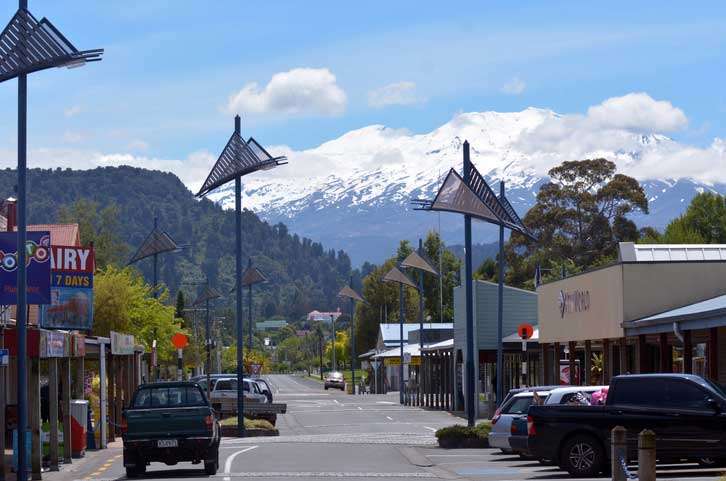
Ohakune is the ski capital in the North Island. Photo / Getty Image
There are all sorts of buyers - out-of-towners are buying chalets, people are investing and doing nightly rentals of properties and locals are seeing the prices go up so are getting themselves on the property ladder for fear of missing out.
There’s also a renewed belief in the area, Campbell says. Tourism is much bigger, including the ski fields, mountain biking, the Whanganui River and the Tongariro Crossing.
Dominating the town is Mt Ruapehu - and people pay good money to have that fantastic mountain view, she says.
On top of all that, compared to the rest of the country Ohakune is still relatively affordable, she says.
9. Whanganui Central, Whanganui - up 28.2 percent
Steve Ellis, Harcourts Whanganui principal, says prices in this town are still heading up.
ÓneRoof figures show the median value for Whanganui Central over the last year went up 28.2 per cent to $250,000 but Ellis says that figure is probably too low already.
“I would say it’s definitely going to be up among the $300,000s, average price.”
The market has slowed down a bit but only because listings are down - when a house does go on the market it sells fast, “no mucking around”.
Around three or four years ago there were between 700 to 1000 properties on the market across Whanganui for the same time of the year but that figure is down to about 170, Ellis says.
“We’ve been selling all of those houses and now we’re down to what people are wanting to sell now - as I say they get snapped up and we end up with three, four, five offers on each property.”
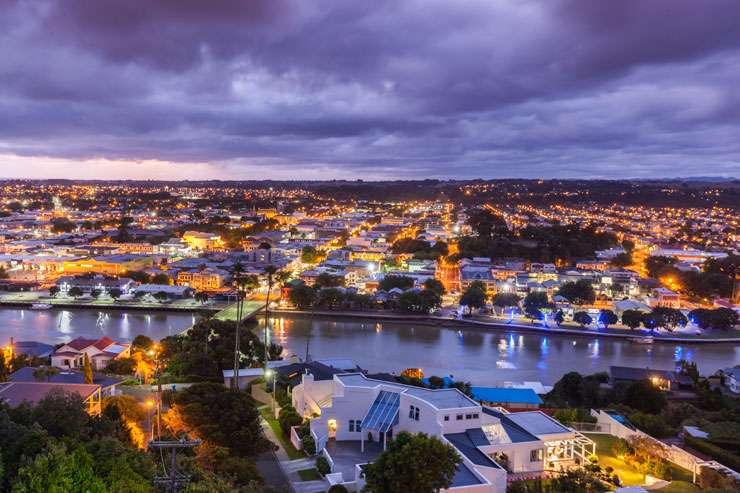
Whanganui's housing market is booming and has two suburbs in the top 10. Photo / Getty Images
While out of towners do make up a large number of buyers, they are by no means all the buyers, Ellis says.
“We’re still selling a lot of properties to Whanganui buyers.”
Whanganui district has seen big population growth and a lot of new housing is going up, mostly outside the central city.
A burst in Whanganui central is probably because it’s such a great place to live.
“There’s the attraction of the river; heritage buildings. It’s got a feel and culture of its own here.”
The locals are an attraction, too, he says.
“When people come to Whanganui they find out we have beautiful people here, very friendly people.”
10. Castlecliff, Whanganui - 27.8 percent
About 10 minutes from central Whanganui is the once downmarket seaside suburb of Castlecliff but those downmarket days have pretty much gone.
Growth in this suburb by the beach has been “phenomenal”, says Steve Ellis, from Harcourts.
The median property value for Castlecliff was $230,000, according to OneRoof figures, up 27.8 per cent in 12 months, but prices are still shifting fast.
The highest price paid in the suburb in the last year, $765,000, has been eclipsed by a recent sale of a Longbeach Drive property, both with sea views and by the golf course, which sold for $950,000.
Ellis says Longbeach is the higher-priced end of Castlecliff. Lower-priced properties are at the other, more industrial end, with medium-priced properties in between, but the whole suburb is on the up with a rejuvenation underway.
“It’s a seaside area and I think a lot of people are looking to invest there. It was regarded as one of the lower-priced areas so it was attractive in terms of price but you’re also close to the beaches and the sea.
“I wouldn’t say high-priced yet, but it’s getting up there. It’s not a suburb you can say is a cheap suburb anymore.”
There’s a trendy central shopping area with restaurants now, Ellis says.
“The beaches are always going to attract people and I think the cost. There’s been talk of a port development there at one time and that’s still a possibility.
“A ferry terminal - that’s still being talked about, so I suppose people go ‘that’s a good opportunity’ but I think regardless of that it has gone off anyway, as it should. It’s a good seaside little area.”





































































